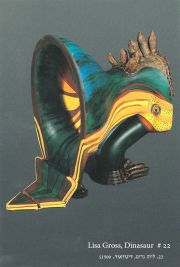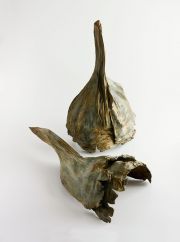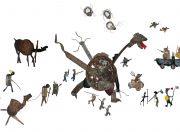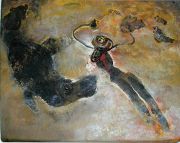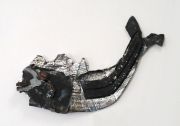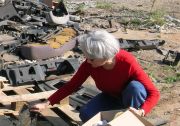Lisa Gross
Artist Social
- Facebook: lisa.gross.752
For more than 15 years the basis of my work has been other people's discards. A quick survey of my studio in Azure, Israel, attests to years of foraging for items waiting to be recycled into works of art: abandoned wooden and wicker furniture parts, rusted metal scraps, smashed tin cans, mangled car parts and shattered glass...these are the "found objects" in whose battered forms, contours and textures I see my future sculptures.
The process of transforming these found objects into something utterly new, infused with life and energy, personality and expression, rhythm and movement is the driving force behind my work: a personal recycling as it were. My deeply-ingrained habit of seeing faces and figures in everything has led to the vast majority of my works being figural. Whether human or animal, the raison d'être for each of my creations is always two-fold: revealing the unrecognized beauty of their recycled surfaces, and encouraging the contemplation of themes of human and environmental significance.
But it is not only in man's discards that I have found inspiration. Exploring the artistic possibilities of nature's discards is a new path on which I have recently embarked. Several of my current works are comprised entirely of palm spathes - elegant dried pods that exist in a variety of shapes, sizes and tones. In casting these natural forms in bronze, or suspending them in kinetic installations, I have sought to transform these botanical elements into evocations of aviary and marine life, to highlight the beauty of their unadulterated forms, and to engage them in my on-going effort to confront environmental issues.
Living in a country where water scarcity is a constant concern, it is perhaps of no surprise that the environmental and ecological themes that most frequently inform my works revolve around issues of water. My contribution to "Aslaviva, Water and the Environment" (Tel Aviv Opera House, 2002) challenged viewers to confront Israel's need to update her antiquated water systems; my monumental floor installation "Surfaces/Appearances" (Ashdod Art Museum/Monart Center, Ashdod, 2009) addressed the pollution of our natural bodies of water; and, most recently, my kinetic sculpture 'Turmoil' (Artist's House, Tel Aviv, 2015), offers a commentary on the vanishing variety of marine life due to over-fishing and other human abuses.



